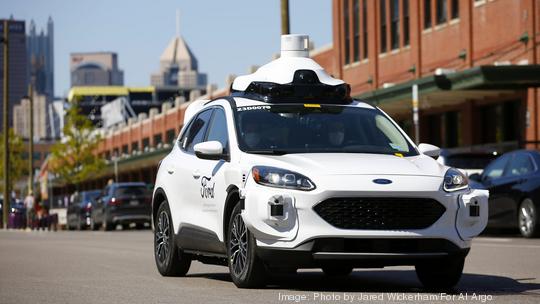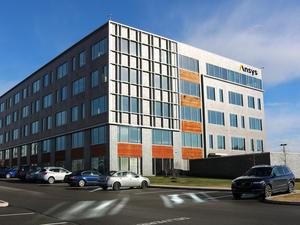
At about 41,000 deaths per year, riding a bicycle alongside roads that are shared by vehicles can be a dangerous endeavor. That's according to a report from the World Health Organization, which looked at the importance of addressing safety for cyclists, among other topics.
Pittsburgh-based AV company Argo AI is hoping to make roads safer not only for other humans who use vehicles for transportation but also for bicyclists and others as part of its development of self-driving technology. As part of that commitment, it announced it teamed up with the League of American Bicyclists, a national advocacy group, to establish a series of guidelines the company hopes will serve as an industry standard for all AV companies to follow.
"Argo AI and the League of American Bicyclists share a common goal to improve the safety of streets for all road users," Ken McLeod, policy director, the League of American Bicyclists, said in a release. "We appreciate Argo's proactive approach to researching, developing, and testing for the safety of people outside of vehicles. Roads have gotten significantly less safe for people outside of vehicles in the last decade, and by addressing interactions with bicyclists now, Argo is demonstrating a commitment to the role of automated technology in reversing that deadly trend."
Argo said the league provided consultation as part of Argo's efforts to engage with the cycling community to better learn about possible concerns when it comes to self-driving vehicles sharing the same roads that bicyclists use.
Those efforts resulted in six technical guidelines the company will now implement as its development of the self-driving vehicle continues. They include:
- Identifying cyclists as a distinct object class: AVs should be able to distinguish the difference between a person on a bicycle and a person on a scooter or one who is just walking and be able to make this distinction across varying vantage points and speeds.
- Expecting typical cyclist behavior: Cyclists on the road might lane split, yield at a stop sign or make sudden movements to avoid obstacles and AVs should be able to anticipate actions like these and others when it detects a cyclist by using cyclist-specific motion forecasting models that account for these behaviors.
- Cycling infrastructure and local laws should be built into AV mapping technology: To guide self-driving vehicles, AV companies create their own mapping solutions using a variety of cameras and Lidar equipment, which Argo believes should also be able to identify things like bike lanes so these vehicles can add a heightened level of anticipation when driving next to one, which could allow them to predict that a car parked in a bike lane might result in a bicyclist having to drive into the lane of the self-driving vehicle to avoid a collision.
- AVs should drive in a consistent and understandable way: Road users should be able to know the intentions of a self-driving vehicle whenever they approach one on the street, meaning these vehicles should respect safety margins relating to speed and distance that is equal to or greater than local laws, only passing a cyclist when those margins can be maintained throughout the entire procedure while maintaining distances to allow time to stop in the event of a cyclist falling or performing other actions.
- Being prepared for uncertain situations and proactively slowing down: A self-driving system needs to account for uncertainty in cyclists' intent, direction and speed; it should be capable of increasing its margin of distance to allow for more time and space between itself and a cyclist.
- Different cyclist scenarios should be tested continuously: This should be done in virtual simulations of self-driving technology and in the real-world physical testing of it
"The creation of these guidelines is part of Argo's dedication to building trust with community members and developing a self-driving system that provides a level of comfort to cyclists, by behaving consistently and safely," Peter Rander, president and co-founder of Argo AI, said in a release. "We encourage other autonomous vehicle developers to adopt them as well to further build trust among vulnerable road users."









